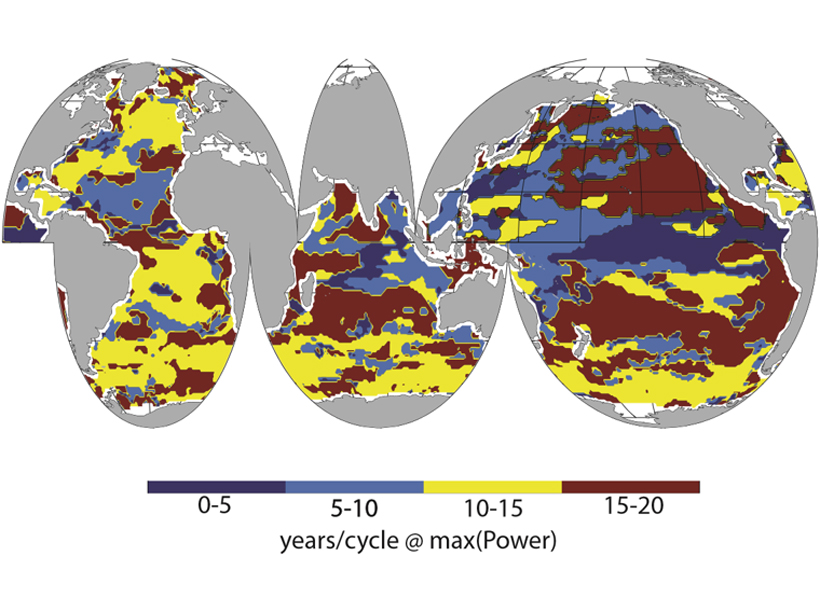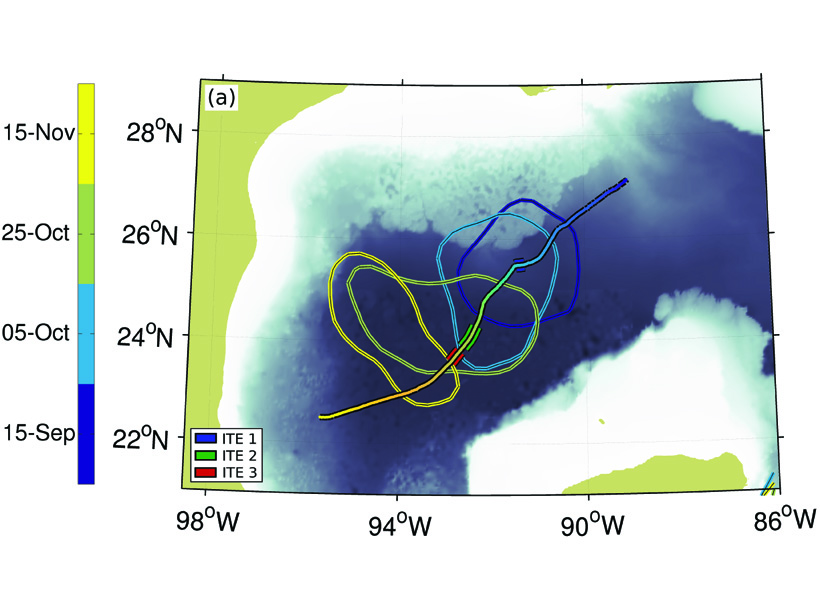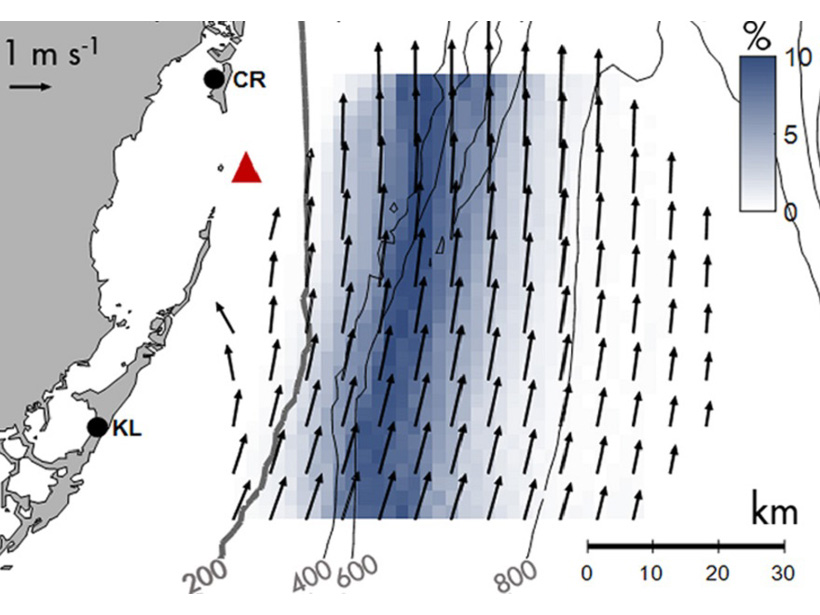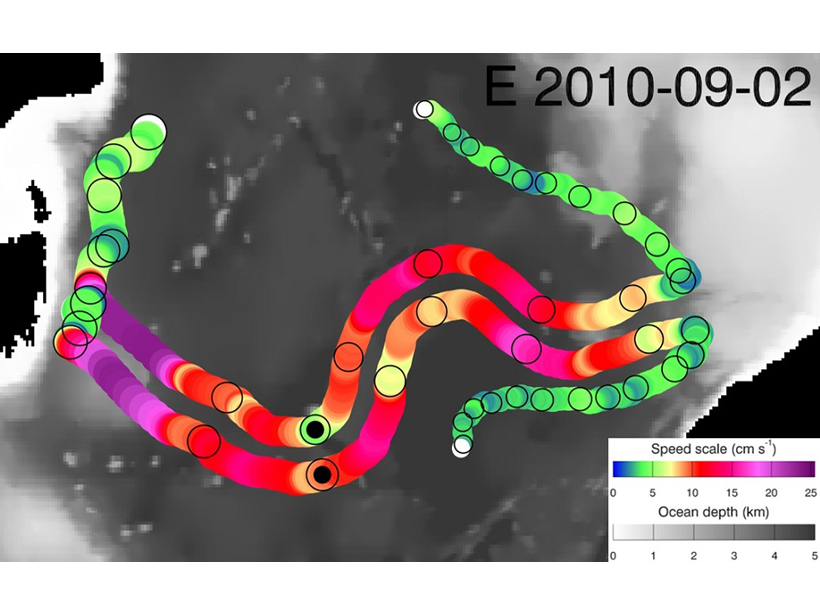A new 34-year global time series of observed sea surface partial pressure of CO2 links regional variation to major climate modes.
J. Sprintall
Editor, GRL
Posted inEditors' Highlights
An Inherently Noisy Ocean Can Disguise Regional Sea Level Trends
Sea level trends in different regions of the ocean caused by both natural and man-made changes in the atmosphere can be partially hidden by internal random processes intrinsic to the ocean.
Posted inEditors' Highlights
Smaller Eddies Found Within Eddies
A glider survey observed three small eddies embedded within a larger scale eddy associated with the Loop Current in the Gulf of Mexico.
Posted inEditors' Highlights
Energetics of Western Boundary Current Surface Flows Are Similar
Despite different wind forcing and air-sea heating conditions, the surface layer energetics of two Western Boundary Current systems in different ocean basins are surprisingly similar.
Posted inEditors' Highlights
Two Paired Eddies Travel Faster and Further Than One
The first observational evidence of dipole eddy pairs (modons) in the southern midlatitude ocean reveals that they move faster, live longer, and travel greater distances compared to single eddies.





